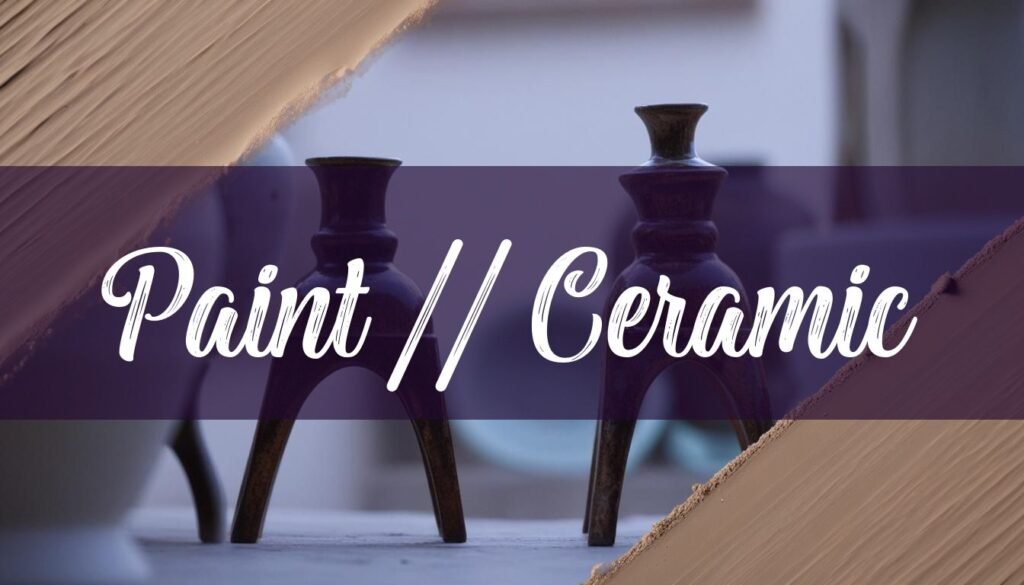Selecting the best paint for ceramic surfaces involves understanding the unique properties of both the paint and the ceramic itself. The goal is to achieve a durable, aesthetically pleasing finish that suits the item’s intended use, whether it’s a decorative piece or functional tableware. Various paints, including acrylics, epoxies, and enamels, offer different advantages and disadvantages, making the choice dependent on the specific project requirements.
Surface Preparation is Key
Proper surface preparation is crucial for ensuring optimal paint adhesion and longevity. Ceramics, especially those that are glazed, can be notoriously difficult to paint due to their smooth, non-porous surfaces. Glazed ceramics are waterproof, which is why acrylics will have poor adhesion. Thorough cleaning is the first step, removing any dust, oils, or contaminants that could interfere with paint adhesion.
For unglazed ceramics, such as bisque-fired clay, the surface is porous, which aids in paint adhesion. In this case, the paint soaks into the pores of the bisque fired clay for best adhesion. Priming can further enhance adhesion, especially on glazed surfaces. Adhesion promoters and primers designed for smooth surfaces can create a better bonding surface for the paint. For instance, C6 Ceramics APP is a water-based formulation utilizing ultra-fine aluminum oxide and ceramic resins allowing for a micro-fine cut and enhancing the surface. Even with careful preparation, it’s important to remember that paint is not as durable as ceramic glazing and should be used for decorative purposes.
Acrylics vs. Epoxies: Weighing the Pros and Cons
Acrylic and epoxy paints are popular choices for ceramic projects, each offering distinct advantages and disadvantages. Acrylic paints are known for their versatility, ease of use, and wide range of colors. They are water-based, making them easy to clean up and relatively safe to use. However, acrylics may not be the most durable option for ceramic surfaces, especially those that will be frequently handled or exposed to moisture. Acrylics have poor adhesion to glazed ceramics and you could likely scratch it off with your fingernail. Find more about how acrylic paint can be used for ceramics.
Epoxy paints, on the other hand, offer exceptional durability and resistance to chemicals, abrasion, and water damage. Epoxy is known for its exceptional strength and durability, making it suitable for structural applications. They form a hard, protective layer that can withstand harsh conditions, making them ideal for functional ceramic items. However, epoxy paints can be more challenging to apply, often requiring careful mixing and application techniques. Epoxy paint often emits strong fumes during application and curing, requiring excellent ventilation and sometimes professional application. Ultimately, the choice between acrylic and epoxy depends on the desired balance between ease of use and durability. You can also learn where to buy your next ceramic penguin to paint to test out these paints. To ensure the best results, it is also worth understanding how to make your own glaze for pottery, as glaze offers a more durable and integrated finish compared to paint.
Ensuring Food Safety and Longevity
For ceramic items that will come into contact with food or drink, such as mugs and plates, it is essential to use paints and sealants that are food-safe and non-toxic. Many ceramic paints and glazes contain heavy metals like lead, cadmium, or barium—used for bright colors and glossy finishes. While these materials can be safe when correctly formulated and fully fired, they can leach into food if misused, underfired, or improperly sealed.
A Maker’s Studio No Bake Ceramic paint lays a rich, permanent color on ceramic and glass surfaces and it’s food safe! A food-safe, clear ceramic glaze ensures your paints don’t come into contact with food and won’t leach. Look for products specifically labeled as food-safe and compliant with FDA standards. Proper sealing is also crucial to protect the painted surface from wear and tear. Sealants, such as varnishes and clear coats, create a protective barrier that enhances durability and prevents moisture from penetrating the paint layer. Sealing the paint not only protects it from chipping and fading but also makes your ceramic plate suitable for practical use. For items that will be washed frequently, choose a dishwasher-safe sealant. Regularly reapplying the sealant can help maintain its protective properties and extend the life of the painted ceramic item.





